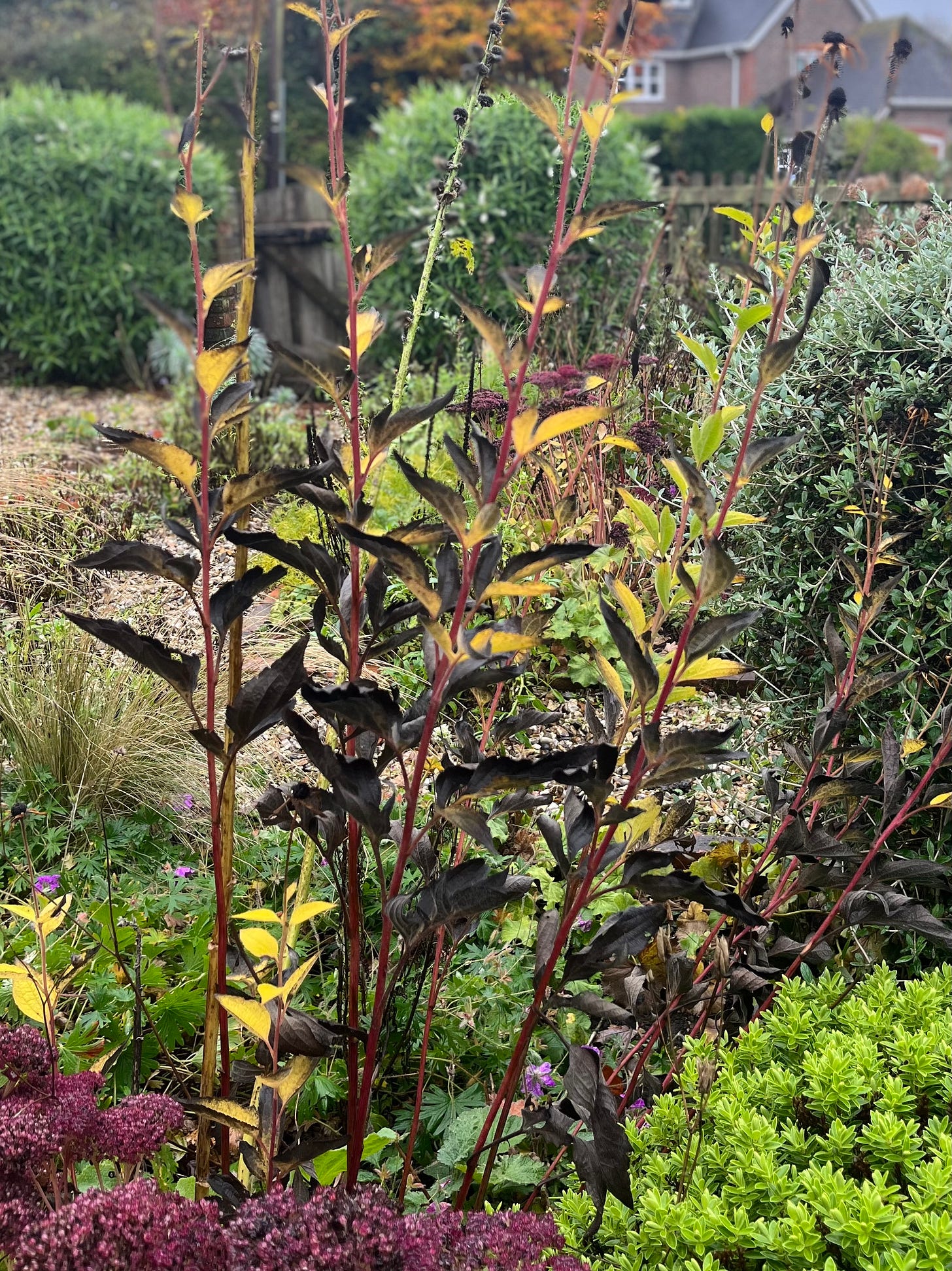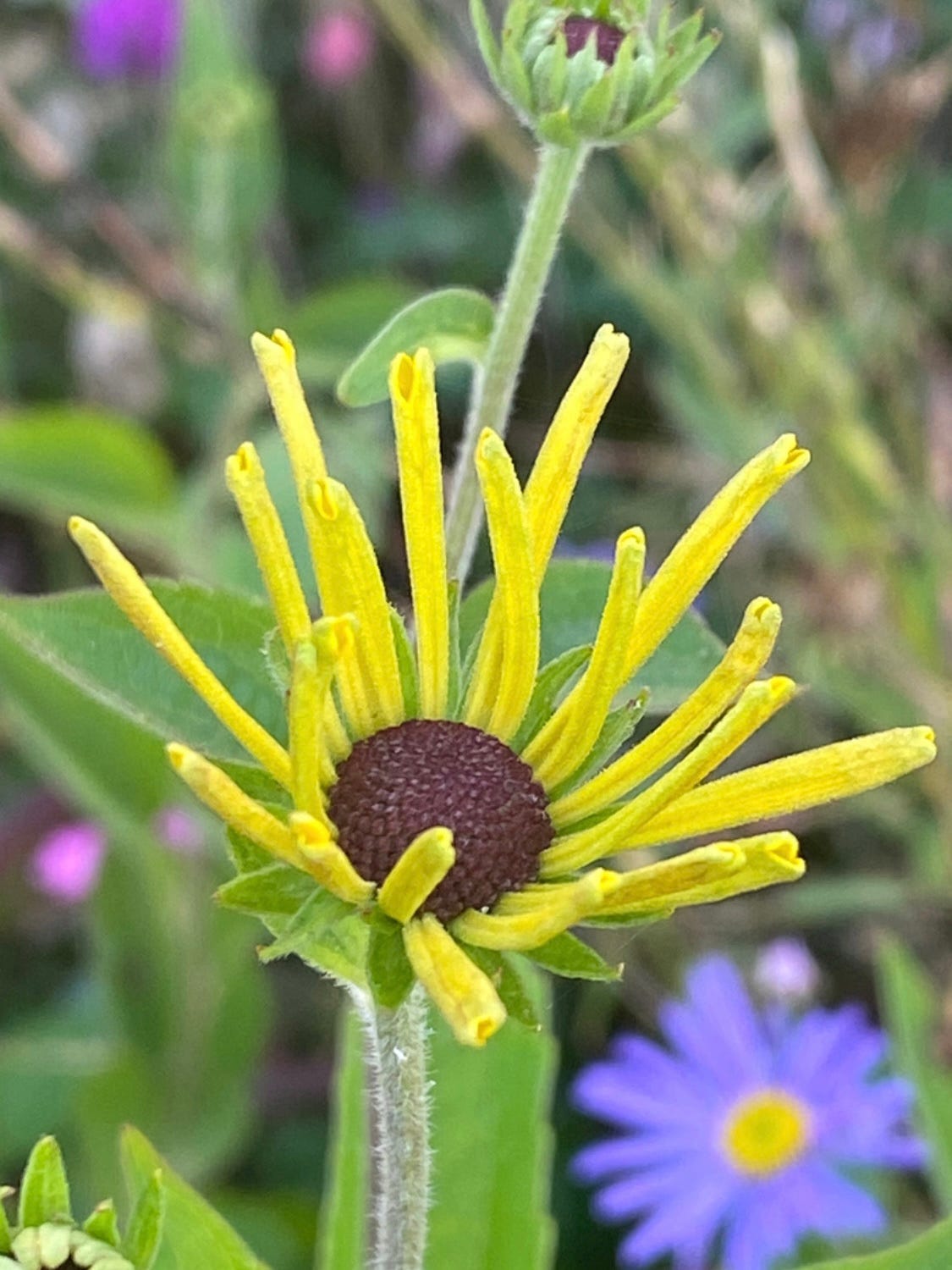I discovered ‘Henry Eilers’ a few years ago and have been obsessed with it ever since. It does of course flower earlier in the year, in August and September, but I have only just noticed how lovely the autumn foliage is. The willowy stems have turned dark red, culminating in dark buttony seed heads, and the elegant trilobed leaves are tinted golden yellow and chocolate brown, reminiscent of the colours of my old Brownie uniform. Maybe a certain combination of weather conditions has made this happen - or more likely, I just haven’t noticed before as I don’t observe the garden as closely at this time of year - but whatever the case, its autumn guise is a real bonus.
Some of you may have glazed over at the mention of rudbeckias as they are very much in that category of yellow that some people refuse to have in their gardens. I love bright yellow - but only at that time of year when all other colours are fading. Earlier in the summer, the yellows in my garden have to be paler, more buttery and less punchy - the pale lemon of Anthemis tinctoria ‘Sauce Hollandaise’, for example - but towards the end of summer and into autumn, deep, bright, golden yellow is what my eye craves. The light is more mellow at that time of year, so colours seem less harsh.
But even if you do have a deep-seated aversion to yellow, read on, because ‘Henry Eilers’ is no ordinary rudbeckia. It was discovered on the side of a railway track in Illinois by the botanist and conservationist Henry Eilers, and was introduced in 2003. A form of R. submentosa, which sports the wider-petaled daisy flower heads you would expect from a rudbeckia, ‘Henry’ is unique, with tightly quilled petals that give the flower a much more subtle persona.
In their native USA, rudbeckias grow in moist prairie lands, and this gives the steer on what they need in the garden - in short, full sun and a moisture-retentive soil. None of them are particularly drought tolerant, although I have found ‘Henry Eilers’ is more so than ‘Goldsturm’, the other rudbeckia I grow. The plants are easy to grow and will clump up after a few years, although if introduced as single plants, their tall, narrow profile means that they look a bit odd and gangly on their own for the first few years. It would be better to plant a group of at least three or five, in retrospect, for better impact. I don’t think I have quite made the most of them where I have placed them in the garden, either, because their kooky forms are so much taller than their companions (up to about 1.3m). I’m biding my time as I want to move them to the back border where I think they would look great communing with Aster turbinellus, Eupatorium ‘Risenschirm’ and Calamagrostis ‘Karl Foerster’, but I’m waiting for them to clump up a bit more so I can divide them. In the meantime I can look out of my office window and admire them in their autumn glory.








I was adverse to yellow in the border! But I am converted and I really don't know why I didn't like it... I was introduced last year to Henry Eilers, its a fabulous plant and it does look good as you've discovered in Autumn. Thank you for another lovely post.